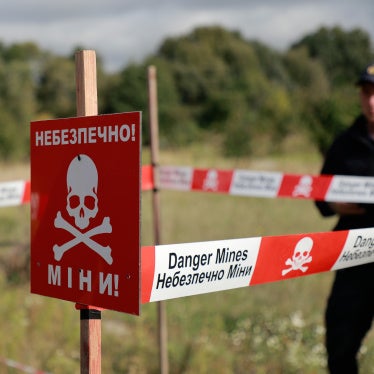The destruction of unwanted stocks of weapons is generally considered an extremely mundane affair – the unavoidable task of getting rid of weapons that are no longer of any use, usually due to age and deterioration.
In the context of the Convention on Cluster Munitions, stockpile destruction is an exciting and beautiful thing – getting rid of weapons that are no longer of any use because they have been recognized to pose unacceptable dangers to civilians.
The requirement for the destruction of all stockpiles of cluster munitions and submunitions, with a mandated deadline, is one of the most important provisions of the Convention. And so far, as we have heard, it has been remarkably implemented. Stockpile destruction in the context of this Convention is a preventive measure, a humanitarian undertaking. It will potentially save millions of lives and limbs, as the many millions of destroyed stockpiled submunitions will never claim a victim. It will also potentially save millions of dollars, as it is much less costly to destroy a stockpiled cluster munition than it is to clear it, or to care for its victims.
I have been asked to identify some key challenges to implementation of the stockpile destruction obligation. But I will start by identifying some things that are NOT real challenges, despite some initial fears that they would be: costs, technical difficulties, and deadlines.
For the big stockpilers from more technologically advanced nations, we see that the huge costs predicted a few years ago have been revised and are no longer daunting, and they are not having problems with the technology or the industrial capacity. For the smaller stockpilers from less technologically developed nations, we see that they are able to use more simple, affordable, and efficient methodologies.
Even at this early stage of the Convention’s life, it is clear that no current State Party should have any difficulty in completing stockpile destruction before the eight-year deadline, most of them well before. There should be no need for the deadline extension provision to ever be invoked.
I see the two key challenges on stockpile destruction to be political will, and transparency.
Because costs and technical issues are not true obstacles, generating political will and assigning the proper high priority to stockpile destruction are the keys to success. This means starting early – a plan in place no later than one year after entry into force, actual destruction started no more than two years after entry into force – and specifically dedicating adequate funds and other resources to the task.
The other key challenge is transparency. States Parties must be clear from the beginning and throughout the destruction process what kind and what level of assistance they might need from others. They must provide early warning to other States Parties if they believe they may have any difficulty in meeting their deadline. In this way, States Parties can collectively find ways to overcome those difficulties.
And States Parties should be transparent about the progress they are making in their destruction program. Of course this means detailed annual reporting as required by the Convention, but it should also entail public destruction events when possible, with civil society, the media, and other observers present.
When a country makes great progress in stockpile destruction, and especially when it completes destruction, we want to be able to witness it and celebrate it in real time! This is of benefit to the State Party and to the Convention more broadly. Even better, make a video of it and help start a new tradition of Convention on Cluster Munition stockpile destruction film festivals!
A final challenge is ensuring that assistance is available to those in need. The record of the Mine Ban Treaty in this respect is not encouraging. While an impressive amount of assistance has been provided for clearance activities by many donors, only a very small number have assisted with stockpile destruction. It is unclear if this will be true of the Convention on Cluster Munitions as well.
In closing, there is no doubt that stockpile destruction is the compelling good news story in the early years of this Convention. With adequate political will and transparency, it will remain so. And the preventive nature of the Convention will have prevailed.
Thank you.








